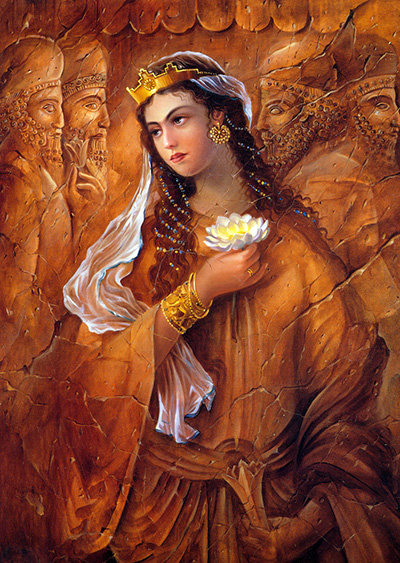Esfandgan is the day that people in ancient Iran praised the dignity of women, earth and mothers, all enjoying the quality of fertility.
The annual feast of Esfandgan, traditionally, is a day during which the Earth is praised and women are venerated. It is celebrated on the 29th of Bahman in the Iranian calendar, which falls on February 18.
Women, as the symbol of love and devotion, illustrated earth with its fertility and fruitfulness in ancient Iran.
The dignity of women or mothers in old Iran was commemorated on the 59th day of winter under the name Esfandgan, also called Sepandarmazdgan.
Esfand or Sepandarmazd (ancient pronunciation) means the mother of creation, love, piety or holy perfect-thinking and it is one of the qualities of God.
The earth is the worldly symbol of Esfand and it is the source of life, birth, piety and purity.
The qualities of earth such as love, piety, generosity, purity, and birth are undoubtedly hidden in women and mothers. Both women and the earth are symbols of birth and creation in many cultures because seeds grow in them.
Esfandgan is a celebration for honoring the dignity of Izad Sepandarmazd whose materialistic symbols are women and the earth.
In ancient Iran, Izads were symbols of the qualities of God, and each day of a month was named after an Izad.
According to the ancient Iranian calendar, every day of the month had a name — instead of a number. Currently, in Iranian calendar, each month has a name which is the name of one of the ancient Iran’s Izads.
February 18, the fifth day of the ancient month of Esfand, according to the old Iranian calendar, is the day of the Esfandgan celebration.
It is a day in which the name of the day and the name of the month are the same, Sepandarmazd or Esfand.
In ancient Iran, every month, a coincidence happened between the name of the month and the name of the day, and that day was a monthly celebration. Esfandgan is the coincidence of the day of Esfand with the month of Esfand.
Abooreyhan Birooni (937-1408), a great Iranian scholar of the medieval Islamic era, in his book Asarolbaghiye explains about Esfandgan as a celebration to value honest, pious and husband-lover women. He introduces Esfandgan as the celebration of women or women’s day in which men granted presents to their wives.
According to Asarolbaghiye, on this day people tried to make the earth clean or cultivate a plant.
Currently, Esfandgan is celebrated in different parts of Iran with different ceremonies. In the village of Afoos in Isfahan Province, a similar celebration named “Golbahar” is held at the beginning of spring. On this day all men leave the village during the day and women take all responsibilities, and at the evening when men return home, they present their wives a gift.
Another similar celebration is held in Javaherdeh village, northern Iran, which is like a harvesting festival and at the end of the day husbands give presents to their wives.
Although the time of Esfandgan and Valentine’s Day is very close, they have no correspondence. “Despite the fact that women are one of the most important representations of love and friendship, love can exist between friends, parents and children or countrymen.”
In ancient Iran, like many other countries, women’s day or mother’s day was a unique issue not being mixed with the day of lovers.
Source:tehrantimes



